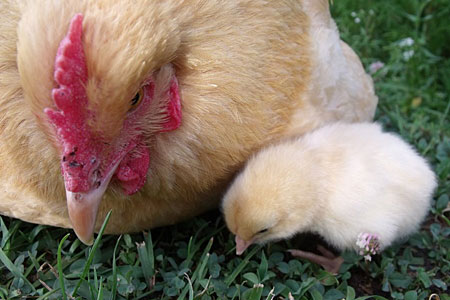
Orpington chickens get their name from the town of Orpington in Kent, England. They are the creation of Britain’s William Cook, whose goal was developing an outstanding meat and egg breed that tolerates England’s cold winters.
Orpingtons first appeared at exhibition in London in 1886 and were first shown in the United States in 1895. Today Orpington chickens are one of our most popular backyard breeds.
Physical Attributes
The original Orpington variety was solid black, with the idea that black feathers wouldn’t show dirt despite London’s notoriously abundant dust and soot. Today Orpingtons come in several color varieties, of which buff is the most common.
Orpington chickens have a single comb and may be large or bantam. The first four color varieties of large Orpingtons were accepted into the American Standard of Perfection in 1902. The first bantam varieties were accepted in 1960.
Breed Qualities
Orpington chickens are a dual-purpose egg and meat breed. As meat birds they are rather slow growing and therefore produce exceptionally tasty meat. Roosters weigh as much as 10 pounds, hens 8 pounds. Their loose feathering makes them look even more massive.
The hens are good layers of eggs with brown shells. Production type Orpingtons lay as many as 280 medium size eggs per year. Exhibition type Orpingtons don’t lay quite as well, and are more inclined to brood and raise chicks.
Their loose feathering makes Orpingtons especially cold hardy. They are excellent foragers that also do well in close confinement.
Orpington chickens have a gentle temperament, are naturally friendly, and are therefore easy to tame. They make an excellent choice for any backyard flock, especially for beginning keepers and for children desiring pet chickens.
Helpful Links
What is a Dual Purpose Chicken?
Difference Between Production Chickens and Show Chickens
Orpington Chickens Offered by Cackle Hatchery®
And that’s today’s news from the Cackle Coop.
Gail Damerow has written numerous books about keeping poultry, including Storey’s Guide to Raising Chickens.

